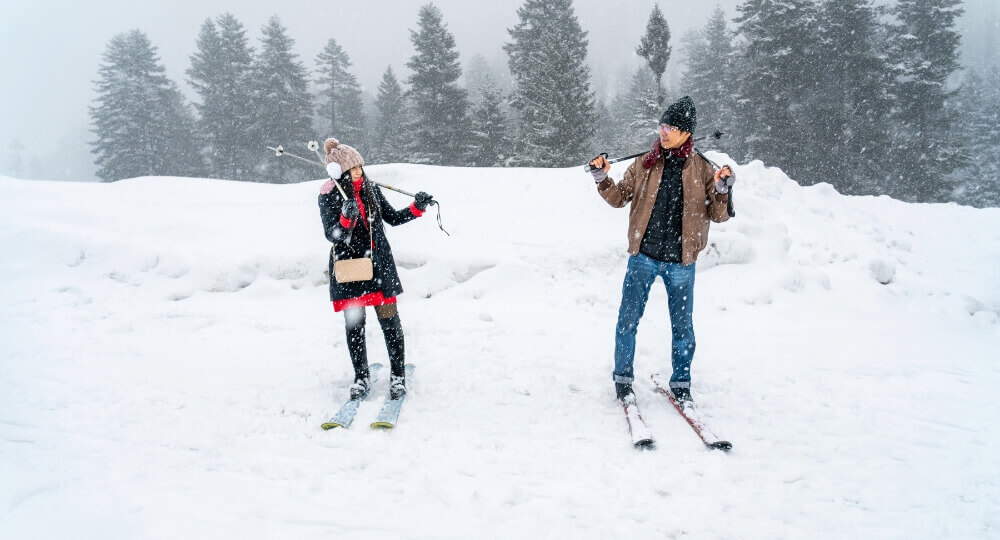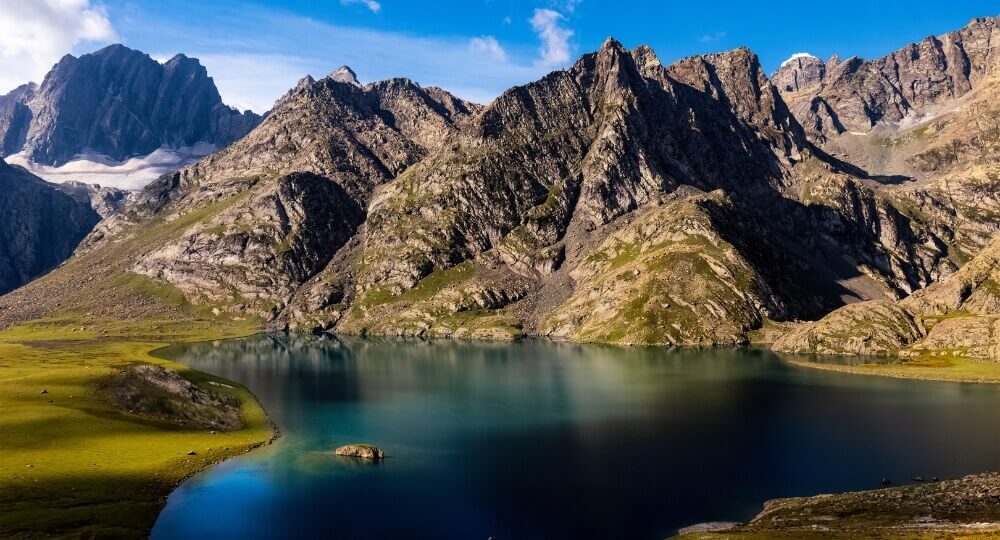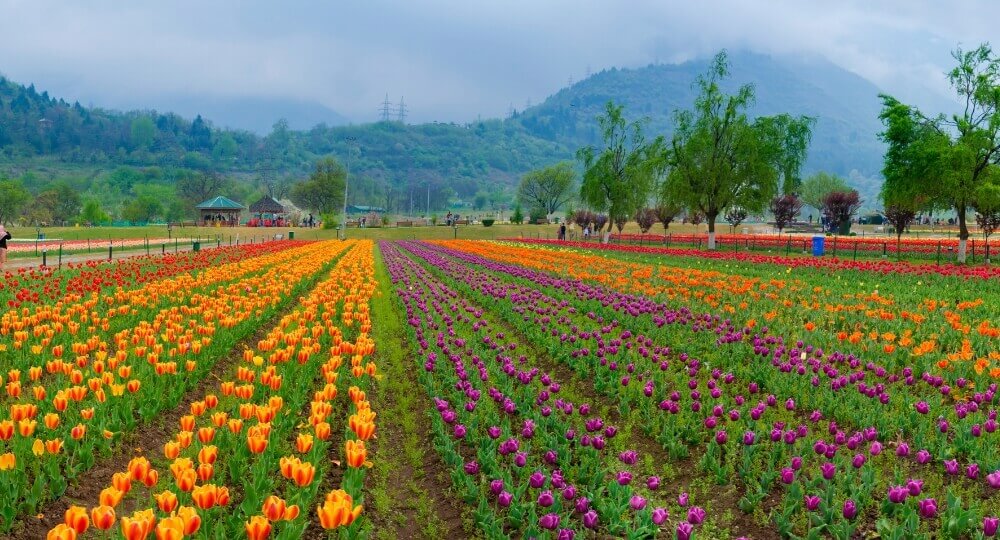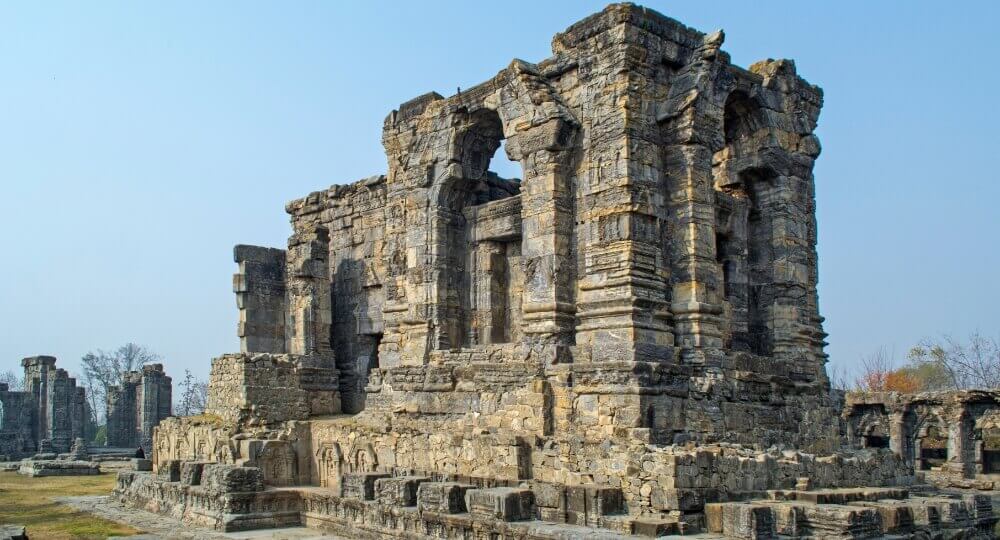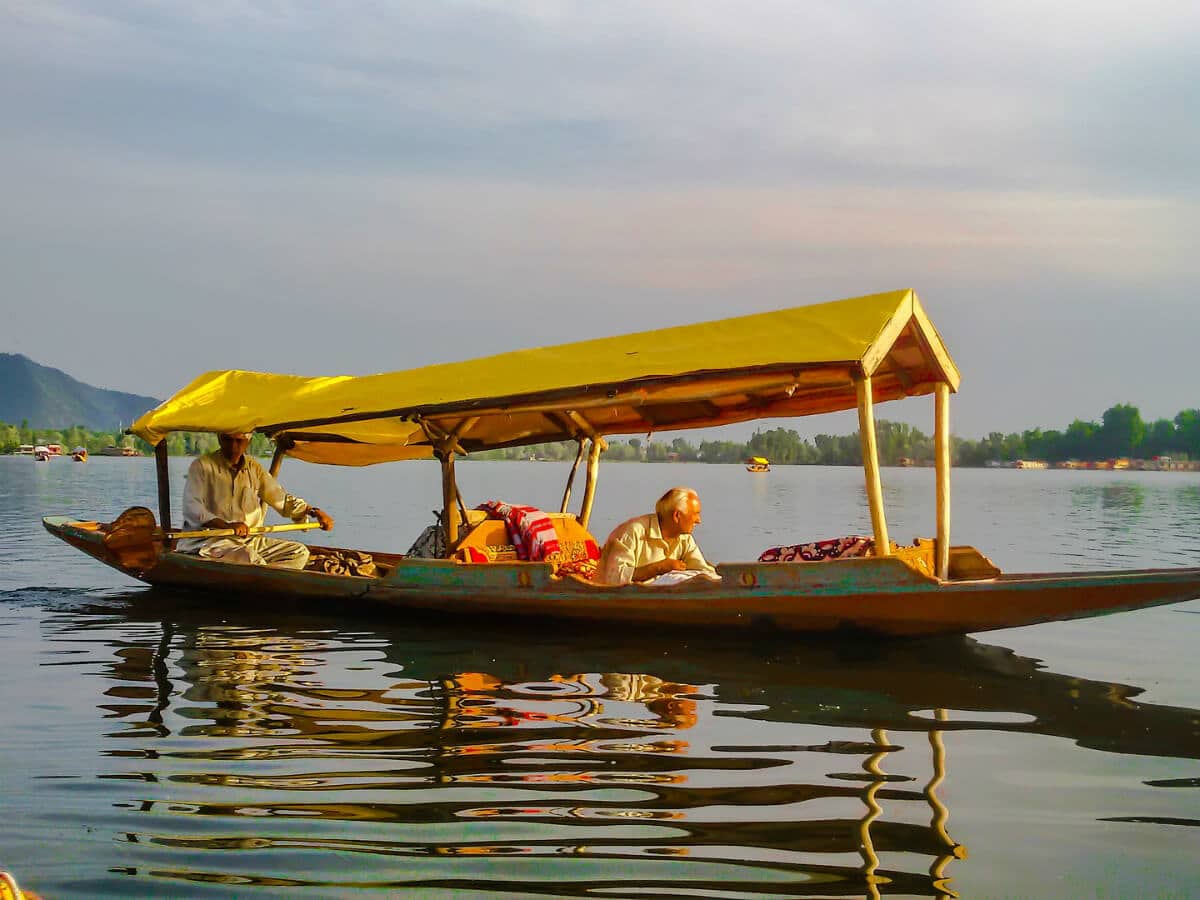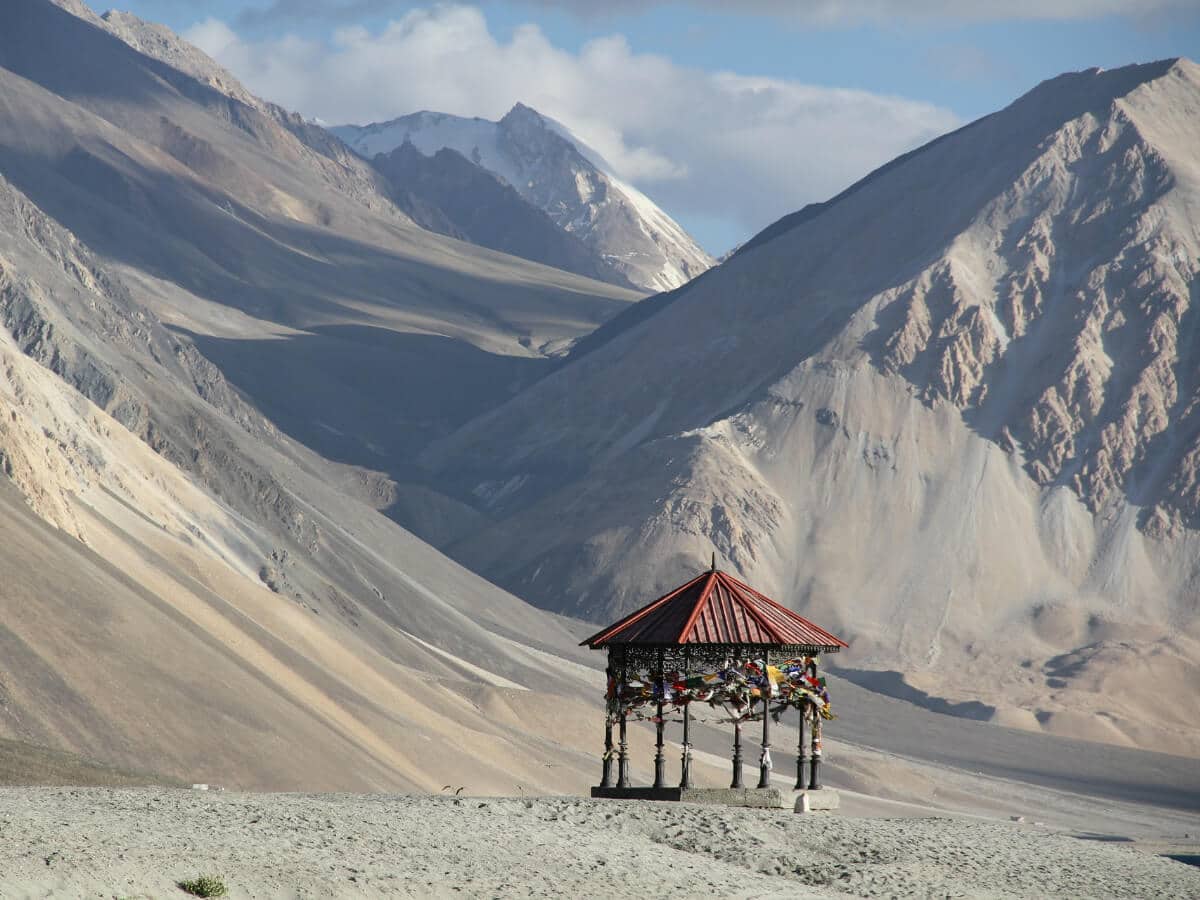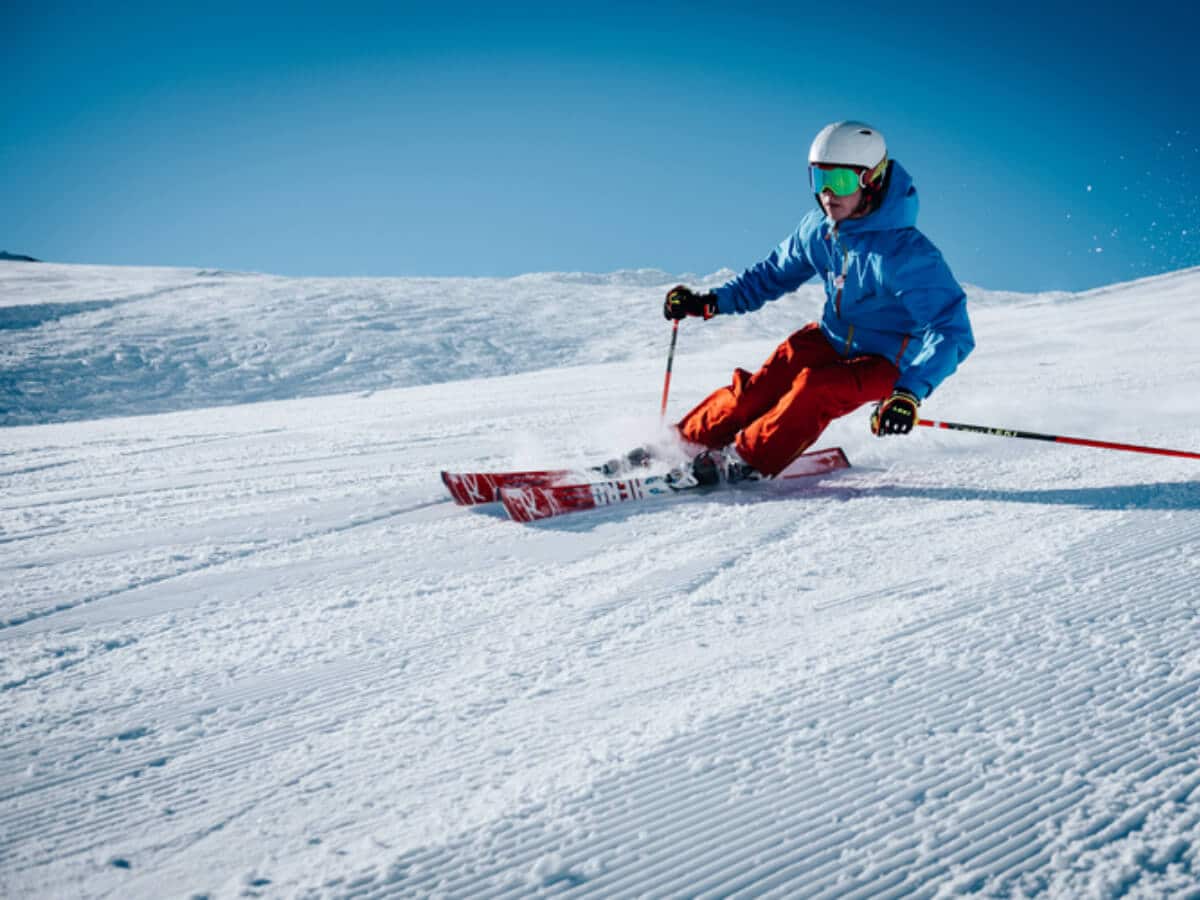Tour Packages
Jammu and Kashmir Tour Packages
SUPER DEAL PRICE
STARTS FROM
per person on twin sharing

ATMs are widely available, limited in rural areas.

Credit card usage is limited in remote areas.

Banks are common in towns, scarce in villages.

The legal drinking age in Jammu and Kashmir is 21.

Residents here are known for warm hospitality.
Jammu and Kashmir - Overview
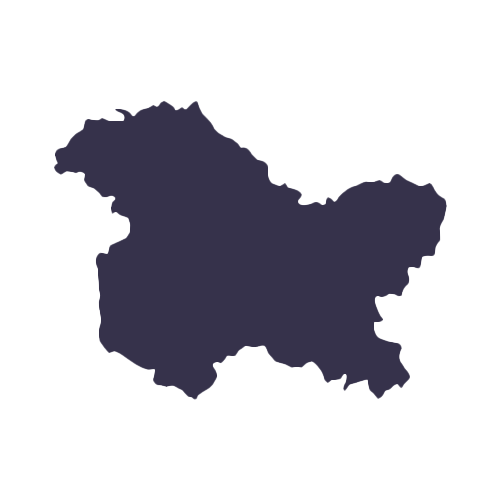
By Purpose
Couples
For Newlywed Vacations
Family
For Family Vacations
Top Travel Destinations
Dal Lake
Mughal Gardens
Vaishno Devi
Gulmarg Gondola
Tulip Garden
Amarnath Temple
Alpather Lake
Dogra Art Museum
Bahu Fort
Mubarak Mandi Palace
Betaab Valley
Thajiwas Glacier
Everything You Need to Know About Jammu and Kashmir
When you hear the phrase heaven on earth, only one name comes to mind, and that’s Jammu and Kashmir. Located in the northern region of India, this union territory has rightfully earned this title. If you’re wondering about the reasons why Jammu and Kashmir is considered a paradise on earth, then you must book our Jammu and Kashmir tour packages immediately. From admiring the lakes, glaciers, and gardens of the region to tasting its scrumptious foods and beverages, our tour packages will let you explore every corner of this beloved destination. Let’s do a deep dive into the history, art, culture, cuisine, tourist attractions, and shopping scenes of Jammu and Kashmir so you can find out why tourists can’t stop raving about it.
Table of Content
- About Jammu And Kashmir
- Tidbits
- Essential Tips To Know Before Travelling To Jammu And Kashmir
- Our Best Budget Jammu And Kashmir Tour Packages
- Jammu And Kashmir At A Glance
- Top Reasons To Visit Jammu And Kashmir
- Best Time To Visit Jammu And Kashmir
- Top Places to Visit In Jammu And Kashmir
- Top Things To Do In Jammu And Kashmir
- Shopping In Jammu And Kashmir
- Dos And Don’ts While Travelling To Jammu And Kashmir
- Foods To Try Out In Jammu And Kashmir
- Art And Culture In Jammu And Kashmir
About Jammu And Kashmir
History
Jammu and Kashmir was a princely state during the British East India Company’s presence and the British Raj, until 1947. It was the period after the First Anglo-Sikh War which led to the formation of the princely state of Jammu and Kashmir. The Instrument of Accession was signed by Maharaja Hari Singh in October 1947, thereby allowing Jammu and Kashmir to become a part of the Dominion of India.
The Jammu and Kashmir Reorganisation Act, 2019, was introduced by the Indian government in August 2019. It was proposed in the Rajya Sabha that Article 370 of the Indian Constitution, which granted special status to the state of Jammu and Kashmir, be repealed and that Jammu and Kashmir be divided into separate union territories. This led to the creation of the two union territories, namely Jammu and Kashmir and Ladakh.
Economy
A majority of Jammu and Kashmir’s population is employed in agriculture and horticulture. Some of the main crops harvested in the region include rice, pulses, millet, corn, tobacco, and cotton. The Kashmir Valley is home to vast orchards that produce apples, cherries, peaches, pears, almonds, and walnuts, all of which are among the major items exported from the union territory. The valley is also the only place in India that produces saffron. Many industries present in the region contribute to its economy, including handloom weaving, leatherwork, wood carving, and carpet weaving. Several of these industries flourished thanks to encouragement from the royal kings. Tourism has helped bring out arts and crafts, such as jewellery making, copperwork, and silverware.
Tidbits
- Maharaja Hari Singh was the last ruling maharaja of Jammu and Kashmir.
- Kashmiriyat is often the term used to describe Kashmir’s unique culture.
- The Pir Panjal Railway Tunnel in Jammu and Kashmir is known to be the longest railway tunnel in India.
- Kalhana, who wrote Rajatarangini (a book which chronicles the history of Kashmir), is considered to be the one of the first historians of India.
- Emperor Ashoka is credited with being the founder of the city of Srinagar.
- The town of Drass in Jammu and Kashmir is the coldest place in India and the second coldest inhabited place in the world.
- The Gulmarg Gondola is the highest cable car in Asia and the world’s second-largest and second-highest cable car project.
- The Tulip Garden in Srinagar is the largest tulip garden in Asia.
- Jammu and Kashmir is the largest producer of saffron in India and the second-largest producer of saffron in the world.
- The Floating Vegetable Market in Srinagar is the only one of its kind in India.
- The Wular Lake in Jammu and Kashmir is the largest freshwater lake in India and the second-largest freshwater lake in Asia.
Essential Tips To Know Before Travelling To Jammu And Kashmir
- Some of the skincare products you must carry during your trip to Jammu and Kashmir are sunscreen, lip balm, and a nourishing moisturiser.
- Remember to pack plenty of warm layers, including sweaters, jackets, boots, scarves, gloves, and so on.
- The region often experiences power cuts, which is why it’s imperative to carry a power bank.
- Prepaid SIM cards from outside of Jammu and Kashmir don’t work due to security reasons, which is why you will have to buy a local SIM card during your trip.
- Wearing a headscarf for women is important while visiting a religious institution.
- While Ola and Uber are available in Jammu and Kashmir, the primary cab services in the region are Jugnoo and Novo Cabs.
- You might want to avoid staying in Srinagar on Republic Day and Independence Day since mobile internet services are usually suspended on those days due to security reasons.
- Due to poor mobile network in certain areas, online payments may not always work smoothly in Jammu and Kashmir, which is why it’s important to carry sufficient cash.
Our Best Budget Jammu And Kashmir Tour Packages
| Jammu And Kashmir Tour Packages | Duration | Highlights |
| Charming Srinagar Gulmarg Tour | 5 Nights 6 Days | Mughal Gardens, Thajiwas Glacier, Amarnath Cave Temple, Mattan Temple, Chandanwari |
| Combo Kashmir Package | 7 Nights 8 Days | Vaishno Devi Temple, Chandanwari, Amarnath Cave Temple, Dal Lake |
| Heaven On Earth Package | 4 Nights 5 Days | Dal Lake, Gulmarg Gondola, Shankaracharya Temple |
Jammu And Kashmir At A Glance
| Category | Details |
| Union territory | Jammu and Kashmir |
| Currency | The Indian Rupee (INR) |
| High Season | Jammu: October to March ; Kashmir: April to June |
| State Flower | Common rhododendron |
| Standard Voltage | 230 volts |
| State Animal | Kashmir Stag/Hangul |
| Languages | Kashmiri, Dogri, Hindi, English, and Urdu |
| Famous Tourist Attractions | Dal Lake, Mughal Gardens, Vaishno Devi, Gulmarg Gondola, Tulip Garden, Amarnath Temple, Alpather Lake, Dogra Art Museum, Mubarak Mandi Palace |
| Things To Do | Trekking, skiing, pony rides, snowboarding, sledging, paragliding |
| Famous Food | Rogan josh, yakhni lamb curry, modur pulao, dum aloo, kahwa, goshtaba, muji gaad |
| Places To Visit | Srinagar, Gulmarg, Sonamarg, Pahalgam, Yusmarg |
| Souvenirs To Buy | Pashmina shawls, carpets, papier mache products, Kashmiri tea, wooden objects, jewellery, Kashmiri spices |
Top Reasons To Visit Jammu And Kashmir
The reasons to book GT Holidays’ Jammu and Kashmir tour packages are plenty, and some of them are:
Mesmerising Natural Beauty
The natural beauty of Jammu and Kashmir can barely be put into words. After all, there is a reason it’s called ‘heaven on earth’. Everywhere you turn, there is a spellbinding natural landscape waiting to greet your eyes. There are the pristine lakes, such as Dal Lake, Manasbal Lake, Nigeen Lake, and Wular Lake. The region has the Tulip Garden and Mughal Gardens, which offer the most soothing views to travellers in the form of blooming flowers and lush greenery. There are valleys with rivers flowing in the background and colourful meadows, including Betaab Valley, Aru Valley, Poonch Valley, and Gurez Valley. And of course, there are the snow-capped mountains whose beauty can’t be captured even through endless photographs.
Places Of Religious Significance
Kashmir is home to a unique branch of Shaivism, known as Trika Shaivism, with prominent philosophers such as Vasugupta emerging from the state. Jammu is home to the revered Vaishno Devi Temple, a vital pilgrimage spot for Shakti devotees everywhere. The region also has the Amarnath Cave Temple, which is home to a naturally formed Shiva Linga made of ice. Visit the Shankaracharya Temple, dedicated to Lord Shiva and considered the oldest temple in Kashmir.
As for the Muslim, there are several revered worship places like the Hazratbal Shrine, Jamia Masjib, and the Charar-e-Sharif.
Delicious Food
Getting to try the local food of this heavenly place is one of the main reasons to go for our Jammu and Kashmir tour packages. The cuisine of Jammu and Kashmir is a mix of Indian, Mughal, Persian, and Central Asian influences. The region’s cuisine makes extensive use of a variety of spices, including saffron, cloves, cinnamon, cardamom, fennel, and ginger. Jammu and Kashmir is renowned for numerous vegetarian dishes, including Kashmiri pulao, dum aloo, and modur pulao. However, the non-vegetarian dishes of the region completely steal the show, be it the rogan josh and yakhni lamb curry or the goshtaba and muji gaad.
Shopper’s Paradise
When you’re not busy admiring the mind-blowing natural landscapes of this slice of heaven, you can spend your time exploring the local markets. Believe us when we say that you will want to grab pretty much all the local handicrafts and souvenirs manufactured in Jammu and Kashmir. On one hand are the world-renowned pashmina shawls, which are a fashion statement, and on the other hand are the items that showcase the craftsmanship of the region’s skilled artisans. This includes the objects containing intricate wooden carvings, Kashmiri carpets, and traditional jewellery. Make sure to bring back plenty of spices from the bazaars of Jammu and Kashmir, especially saffron.
Plethora Of Thrilling Activities
When you’re surrounded by snow-covered mountains, one is bound to indulge in winter sports, right? From trekking and skiing to snowboarding, paragliding, or sledging, there are plenty of activities you can enjoy in Jammu and Kashmir. You can also go for peaceful shikara rides and houseboat rides to admire the beautiful scenery all around.
Best Time To Visit Jammu And Kashmir
The climate of Kashmir is different from that of Jammu. The winter capital of the union territory is Jammu, which has a subtropical climate. The summers in Jammu are usually hot and humid, and the winter season is relatively milder as compared to Kashmir. Let’s take a look at the different seasons in both regions so you can decide accordingly when to book GT Holidays’ Jammu and Kashmir tour packages:
Jammu In Summer (April To June)
Summer temperature in Jammu ranges between 15 degrees Celsius and 30 degrees Celsius. On certain days, the temperature can also go up to 40 degrees Celsius. Jammu is located at a lower elevation compared to Kashmir, and hence hotter. While the weather in March remains quite pleasant, the temperature begins to rise in April. You can experience blooming flowers and lush greenery all around at this time. The festivals celebrated in Jammu during this season include Baisakhi and Bahu Mela.
Jammu In Monsoon (July To September)
When the monsoon season descends upon Jammu, the temperature oscillates between 20 degrees Celsius and 35 degrees Celsius. The rainfall brings some much-needed relief from the heat. Outdoor adventures and pilgrimage journeys usually don’t occur at this time because of the risk of landslides and possible road disruptions. Therefore, it’s pretty risky to visit during this season.
Jammu In Winter (October To March)
During the winter season, temperature in Jammu is usually between 4 degrees Celsius and 24 degrees Celsius. Since this is peak season in Jammu, remember to make your travel bookings in advance. This is the ideal time for outdoor activities, sightseeing, and visiting the historical attractions. The festivals that take place in Jammu during this season are Lohri, Lal Draman Winter Festival, and Pir Panjal Winter Festival.
Kashmir In Spring (March to May)
The temperature during the spring season in Kashmir ranges from 8 degrees Celsius and 17 degrees Celsius. The Kashmir valley blooms with flowers at this season, and there could be brief and occasional showers. With the snow melting, Kashmir sprouts plenty of flowers, including hyacinths, daffodils, and tulips. This is the best time to visit the Mughal Gardens. It’s also when the Tulip Festival takes place in Srinagar, and tulips are usually in full bloom during the first week of April. You can witness the Kashmiri New Year (known as Navreh) being celebrated at this time with our Jammu and Kashmir tour packages. The festival of Baisakhi celebrates the spring harvest festival in Kashmir during this period.
Kashmir In Summer (June to August)
During the summer season, the range of temperature in Kashmir oscillates between 12 degrees Celsius and 30 degrees Celsius. Since this is the peak season in Kashmir, the prices for flights and hotels usually spike up, which is why it’s better to book our Jammu and Kashmir tour packages in advance. This is a great time to go for shikara rides, opt for treks and hikes, and stroll through the orchards in the valley. The Amarnath Yatra takes place during the summer in Kashmir. Tourists can expect scattered rain at this time. The festivals you can experience during the summer season here are the Shikara Festival, Mela Kheer Bhawani, and Gurez Festival.
Kashmir In Autumn (September to October)
As autumn embraces Kashmir, the temperature ranges from 9 degrees Celsius to 22 degrees Celsius. In Kashmir, the autumn season is known as ‘harud’. The famous chinar trees of Kashmir shed their leaves, and the colours transform from green to various hues of red, orange, and yellow. The weather at this time is cold, but not freezing. Make sure to pack some light woollen clothes, since the evenings can get chilly. The Saffron Festival in Kashmir takes place at this time.
Kashmir In Winter (November to February)
During the winter season, the temperature ranges from -2 degrees Celsius to 12 degrees Celsius in Kashmir. If you have always wanted to witness a winter wonderland, then this is the best time to book our Jammu and Kashmir tour packages. You can enjoy thrilling winter adventures in Kashmir during this period, such as snowboarding and skiing. There is the 40-day period known as Chillai Kalan, which lasts from 21st December to 31st January, signifying the harshest winter period in Kashmir. This is when the weather is extremely cold, the temperatures fall drastically, and there is heavy snowfall. You should avoid visiting Kashmir during this 40-day period or plan your holiday accordingly. The Gulmarg Snow Festival is celebrated during the winter season.
Top Places to Visit In Jammu And Kashmir
Srinagar
Srinagar is often regarded as the crowning jewel of Kashmir, and rightfully so, since the city houses plenty of natural attractions along with places of rich cultural heritage. Srinagar is the summer capital of Jammu and Kashmir and has several religiously significant structures. This includes the Shankaracharya Temple, Durga Nag Temple, and Hazratbal Shrine. There is the world-renowned Dal Lake, which is known to be ‘the jewel of Srinagar’ is a freshwater lake where you can enjoy peaceful shikara rides. It’s lovingly called ‘the lake of flowers’, with the shoreline of the lake lined with Mughal-era gardens, hotels, houseboats, and parks. Srinagar is also home to a stunning array of Mughal Gardens, the historical importance of which is so high that they are on UNESCO’s Tentative List to be included as World Heritage Sites.
Must-see attractions: Tulip Gardens, Dal Lake, Mughal Gardens, Pari Mahal, Shankaracharya Temple.
Gulmarg
Gulmarg is a pristine hill station and town nestled in the Pir Panjal Range of the Himalayas. Situated at a height of 2,730 metres above sea level, it can be found in the Baramulla district of Jammu and Kashmir. It holds the title of being the ‘heartland of winter sports in India’ due to the high-class snowboarding and skiing activities it provides to tourists. Gulmarg is famous for being home to the Apharwat Peak, the longest ski slope in Asia. It’s the perfect spot for adventure seekers as it’s where you can enjoy snowboarding, sleighing, and skiing. You absolutely can’t miss out on the Gulmarg Gondola Ride, known worldwide as Asia’s highest and longest cable car ride.
Must-see attractions: Gulmarg Gondola Ride, Gulmarg Golf Course, Apharwat Peak, Alpather Lake
Sonamarg
Sonamarg (also known as Sonmarg or Sonamarag) is a quaint town situated in Jammu and Kashmir’s Ganderbal district. The name of the town translates to ‘meadow of gold’ and it’s located at a height of around 2,730 meters above sea level. The town is famous for the numerous serene lakes and sublime glaciers it’s home to. This includes the majestic Thajiwas Glacier, where you can enjoy activities such as pony rides, sledging, and hiking. It’s a place of interest for trekkers, as this is where you can embark upon the adventurous Kashmir Great Lakes Trek.
Must-see attractions: Thajiwas Glacier, Zoji La Pass, Gadsar Lake, Gangabal Lake, Vishansar Lake
Pahalgam
Pahalgam is a town and hill station situated in the Anantnag District of Jammu and Kashmir. It’s brimming with lush meadows and colourful valleys, with the picturesque Lidder River flowing in the background. In Kashmiri, the name of the town translates to ‘village of shepherds’ and the reason Pahalgam is called the ‘valley of shepherds’ is because nomadic shepherd communities, such as the Gujjars and Bakarwals, once lived in this town. Pahalgam is also popular for being the base camp of the revered Amarnath Yatra. Some of the Bollywood movies that have been shot in this town are Haider, Jab Tak Hai Jaan, Silsila, and Laila Majnu.
Must-see attractions: Betaab Valley, Aru Valley, Mamleshwar Temple, Hajan Valley, Chandanwari
Yusmarg
Yusmarg is a hill station located in the Badgam district of Jammu and Kashmir. It’s known as the ‘Meadow of Jesus’ because there is a belief among the Ahmadiyya Muslim community in the region that Jesus visited or passed through the area. When you’re in this town, you can witness the Doodh Ganga River (translating to ‘the River of Milk), which is known for its milky white waters. Numerous trekking trails start from Yusmarg, such as the Sunset Peak Trek, Tatakooti Peak Trek, Danizab Meadow Trek, and Silent Meadows Trek.
Must-see attractions: Nilnag Lake, Doodh Ganga River, Charar-e- Sharif Dargah, Sang-e-Safed Valley, Pakherpora Shrine
Top Things To Do In Jammu And Kashmir
When you book GT Holidays’ Jammu and Kashmir tour packages, you are exposed to all the breathtaking landscapes that the region is home to. Listed below are some of the best tourist attractions to visit in Jammu and Kashmir and the adventurous activities to engage in:
Things To Do As A Family
Dal Lake
Dal Lake, also known as the ‘Lake of Flowers’ or ‘Jewel of Srinagar’, is an urban lake located in the heart of Kashmir. It’s also reputed to be Jammu and Kashmir’s second-largest lake. Spread over an area of 18 sq km, it forms a part of a natural wetland, which includes its floating gardens. These gardens are called ‘raad’ in the local language and have beautiful blooming lotus flowers during the months of July and August. You can enjoy spellbinding views of Dal Lake from the popular Mughal Gardens, such as the Nishat Bagh and Shalimar Bagh. Travellers can opt for peaceful houseboat and shikara rides on this lake.
Mughal Gardens
The presence of the Mughal Gardens in Jammu and Kashmir is a testament to the beauty of Mughal architecture. The Mughals were heavily inspired by Islamic and Persian styles of design, which led to the Charbagh layout of these gardens. The design was done in a manner such that the central water channel and pathways segregated the gardens into four sections. The most popular Mughal gardens in Srinagar include the Shalimar Bagh, Nishat Bagh, Chashme Shahi, Pari Mahal, and Achabal Gardens. Built between the 16th and 17th centuries, these gardens were primarily developed by the orders of Jahangir and his son, Shah Jahan.
Vaishno Devi
The Vaishno Devi Temple is located on the Trikuta Parvat in Katra in Jammu and Kashmir. Attracting millions of devotees each year, the temple is dedicated to Goddess Vaishno Devi, who is also worshipped by the names of Ambe, Trikuta, Vaishnavi, and Mata Rani. Devotees believe that she is the combined form of Mahasaraswati, Mahalakshmi, and Mahakali. The holy cave is home to three naturally formed rocks (known as ‘pindies’), each of which is said to represent the three avatars of Mata Vaishno Devi. The Shri Mata Vaishno Devi Shrine Board (SMVDSB) is responsible for managing and governing the temple.
Gulmarg Gondola
The Gulmarg Gondola is recognised as the highest cable car in Asia. It also holds the title of being the world’s second-largest and second-highest cable car project. The two-stage ropeway system carries about 600 people per hour to and from Kongdoori Mountain. The cable ride is divided into two phases. The first phase, which lasts for about nine minutes, takes passengers from Gulmarg to Kongdori. The second phase, lasting for approximately 12 minutes, takes them from Kongdori to Apharwat. The Apharwat Peak is situated at a height of 14,403 feet and is known to be Asia’s longest ski slope.
Tulip Garden
The Tulip Garden, which is also known as the Indira Gandhi Memorial Tulip Garden, in Srinagar, is renowned as Asia’s largest tulip garden. Spanning an area of approximately 30 hectares, the garden was opened in 2007. It hosts a Tulip Festival each year during the blooming period of the tulips, lasting usually from mid-March to mid-April. There are also other flowers that grow in this Tulip Garden, including daffodils, hyacinths, and ranunculus. This popular seven-terraced garden houses 48 varieties of tulips.
Amarnath Temple
The Amarnath Temple, also known as the Amarnath Cave Temple, is situated at an elevation of 3,888 metres and is considered one of the holiest shrines in Hinduism. Within the temple is a Shiva Lingam, which is a phallic representation of Lord Shiva. Devotees flock to the temple to witness this Shiva Lingam in huge numbers for the Amarnath Yatra, which usually takes place from June to August. This spiritual pilgrimage begins in the Chandanwari neighbourhood. The temple is revered as one of the 18 Maha Shakti Peethas.
Alpather Lake
The Alpather Lake in Gulmarg is also known as the ‘Frozen Lake’ since the lake remains frozen for most of the year, mainly from November to mid-June. Perched at a height of about 4,390 metres, the lake can be found on the foothills of the Apharwat Peaks. If you’re an adventure seeker, then an interesting way to reach this lake is through a trek that starts from Gulmarg at the Gondola Phase 2 station. Another way to reach the Alpather Lake is through the Gulmarg Gondola ride.
Dogra Art Museum
The Dogra Art Museum is located within the Pink Hall of the Mubarak Mandi Palace. In April 1954, the museum, then known as the Dogra Art Gallery, was inaugurated by Dr. Rajendra Prasad, the first President of India. The museum aimed to showcase and preserve the cultural heritage of the Dogra people. Later, it was developed into a full-fledged museum and subsequently relocated to its current site in 1991. The museum is particularly famous for its collection of Basohli miniature paintings.
Bahu Fort
The Bahu Fort in Jammu is located 5 km away from the city centre. It was built by Raja Bahulochan approximately 3,000 years ago. Legend has it that Raja Bahulochan (who was the brother of Jammu’s founder) laid the first brick of the fort. The fort was later expanded, and improvements were made by the Dogra rulers as well. Within the fort is a temple known as the Bawe Wali Mata Temple or Mahakali Temple, dedicated to the Goddess Kali. Pilgrims are particularly seen visiting the temple on Tuesdays and Sundays.
Mubarak Mandi Palace
The Mubarak Mandi Palace served as the royal residence of the rulers of the Dogra dynasty till 1925, after which Maharaja Hari Singh moved to the Hari Niwas Palace. The construction of the palace started in 1824 and took place over a period of 150 years. The architecture of the palace was designed with Mughal, Rajasthani, and European influences. A part of the palace, known as Pink Hall, was eventually converted into the Dogra Art Museum.
Betaab Valley
Betaab Valley is located in Jammu and Kashmir’s Anantnag district and was named after the Bollywood movie ‘Betaab’, which was filmed in the area in 1983. It’s situated about 15 km away from Pahalgam. Some of the activities you can engage in at this location are trekking, camping, and rope climbing. The valley falls on the way during the Amarnath Temple yatra.
Thajiwas Glacier
The Thajiwas Glacier in Sonamarg is situated at an elevation of 3,000 metres above sea level. It’s an excellent spot for camping and trekking. Alpine forests, lush meadows, frozen lakes, and snow-capped peaks envelop the glacier. As you trek to the glacier, you will encounter Gujjar tribes who live and work in the area. April to September is usually considered to be the best time to visit the Thajiwas Glacier.
Things To Do For Adventure Lovers
- Pony rides, sledging, and hiking at Thajiwas Glacier
- Trekking – Kashmir Great Lakes Trek, Sang-e-Safed Valley Trek, Tarsar Marsar Trek
- Skiing at Gulmarg Ski Resort, Nathatop, and Apharwat Peak
- Pony rides in Yusmarg
- Snowboarding in Nathatop and Gulmarg Ski Resort
- Paragliding in Nathatop, Batote, and Sanasar
Shopping In Jammu And Kashmir
Not only is Jammu and Kashmir a paradise on earth, but it’s also a paradise for shoppers as it has a wide variety of souvenirs for tourists to purchase. Following are some of the best things to buy in the region with our Jammu and Kashmir tour packages and the places to shop from:
What To Buy
Pashmina Shawls
If there is one thing you absolutely must take back home with you from Jammu and Kashmir, it has to be a pashmina shawl. In fact, ‘pashmina’ is derived from the Persian word ‘pashm’, meaning ‘wool’. These shawls are crafted from the fine wool of Changthangi goats, also known as pashmina goats or Changra goats. They belong to a breed of goats that are native to the region of Ladakh, which was previously a part of Jammu and Kashmir. Known for their intricate craftsmanship and incredibly soft material, these shawls are designed with vibrant colours and are delightfully cosy and lightweight. Back in the day, pashmina was mainly worn by the royalty and nobility, thereby giving them an even more opulent quality.
Carpets
Kashmiri carpets are renowned worldwide for their exquisite designs, vibrant colours, and meticulous craftsmanship. These carpets are hand-knotted, often made using wool or silk, and feature designs inspired by nature, Persian motifs, and Mughal art. The hand-knotting technique applied to create Kashmiri carpets is what makes them stronger and more durable.
Papier Mache Products
Papier mache was introduced to Kashmir during the 14th century by the Persian artist named Mir Sayyid Ali Hamadani. These papier mache products are made using paper pulp, and the process involves moulding paper pulp into different shapes and sizes. Such products are usually decorated with birds, floral motifs, and geometric patterns.
Kashmiri Tea
If you’re a tea lover and are on the lookout for tea that’s not the usual milk tea or black tea, then you must try out Kashmiri tea. These are usually of two kinds, namely Kashmiri kahwa and noon chai (also known as ‘pink tea’). Kashmiri kahwa is a traditional Kashmiri green tea made using spices such as saffron, cardamom, and cinnamon. The noon chai of Kashmir is made with gunpowder tea and includes baking soda, milk, and salt. Sugar is optional in Kashmir’s pink tea.
Wooden Objects
Wooden objects made from walnut wood are some of the most popular souvenirs to buy from Jammu and Kashmir for yourself and your loved ones. This includes items such as jewellery boxes, lamps, trays, bowls, and candelabras. These intricately crafted wooden objects are designed by skilled craftsmen who create these items from wood that is used only when the tree turns 300 years old.
Jewellery
If you’re hoping to buy traditional Kashmiri jewellery, then Srinagar will be the best place to head to. The creativity of the artisans comes alive in the form of earrings, bracelets, and necklaces, that are made using silver, gold, and even copper. Meenakari jewellery is one of the most iconic kinds of traditional jewellery you will find in Kashmir, featuring intricate designs and attractive colours.
Kashmiri Spices
Kashmiris make use of various spices in their cuisine, all of which elevate the taste, texture, and colour of the region’s dishes. For instance, Kashmir is the country’s main producer of saffron. Some of the popular Kashmiri spices you can carry back home are saffron, Kashmiri red chilli powder, garam masala, asafoetida, and fennel powder.
Where To Shop
- Raghunath Bazaar: For handicrafts, shawls, dry fruits, carpets.
- City Square Mall: For clothes, accessories, handicrafts.
- Wave Mall: For accessories, clothes, electronics.
- Lal Chowk: For shawls, carpets, dry fruits, spices.
- Polo View Market: For shawls, carpets, dry fruits.
- Floating Vegetable Market: For fresh produce.
Things To Remember When Shopping In Jammu And Kashmir
- Bargaining is quite common in Jammu and Kashmir’s markets. Make sure to be respectful of the vendors as you bargain.
- Remember to refrain from bargaining at the government emporiums.
- The smaller stores may not have online payments available through credit and debit cards, therefore it’s better to carry sufficient cash.
Dos And Don’ts While Travelling To Jammu And Kashmir
- The culture in Jammu and Kashmir is pretty conservative, which is why it’s important to dress modestly while visiting the remote areas and religious/spiritual sites. Women might want to keep their knees and shoulders covered, and people of all genders should avoid wearing revealing clothes.
- The way to greet people in Jammu and Kashmir is by saying ‘adab’. Make sure to smile and say ‘adab’ whenever you meet a local in the region, as it shows kindness and politeness.
- Make sure to remove your shoes before you enter someone’s home.
- Always ask for permission before taking someone’s photograph, especially when it comes to religious locations and women.
- Stay away from public displays of affection.
- Don’t engage in discussions related to the politics or complex history of the region.
- Due to security reasons, certain areas in Jammu and Kashmir are restricted or require special permits to be accessed. Therefore, avoid visiting restricted areas and always visit lesser-known locations accompanied by a local guide or authority.
- Jammu and Kashmir has a rich variety of flora and fauna. Hence, remember not to pluck any of the flowers or disturb the animals or damage the plants.
- Maintain the pristine beauty of the region and remember never to litter. If there is anything you need to throw away, do so only when you find a garbage bin.
Foods To Try Out In Jammu And Kashmir
The food of Jammu and Kashmir is directly tied to the rich culture, history, and geography of the region. The union territory’s cuisine is mainly influenced by the culinary traditions of the Mughals and Persians.
Kashmiri Pandits are among the oldest inhabitants of the Kashmir Valley. They are one of the few Brahmin communities in the country who consume non-vegetarian food, along with Goan and Bengali Brahmins. Mutton is a very common presence in their meals. It’s said that the Kashmiri Pandits of the older generations avoided eggs, chicken, tomatoes, garlic, and onions. They did, however, consume fish and lamb. The food of Kashmiri Pandits makes use of a lot of asafoetida, yoghurt, and turmeric powder. When it comes to vegetarian food, Kashmiri Pandits use various vegetables and cottage cheese to make their curries. Some of the vegetarian dishes you can try out include tsok wangun, chaman kaliya, dum aloo, and nadru monje.
The cuisine of Jammu and Kashmir is incomplete without the mention of wazwan, a traditional multicourse meal which is reflective of the rich cultural heritage of Kashmiris. This meal is mostly heavy on meat, but it does have some vegetarian dishes as well. It mostly consists of anywhere between 24 to 36 dishes, but the number of items in a wazwan depends on the occasion and the number of guests. For a gathering as lavish as a wedding, a wazwan can also have as many as 72 dishes. Wazwan doesn’t just feature in celebratory gatherings, but is also seen in funerals, where a minimum of seven dishes is usually made. This traditional multicourse meal is particularly common among the Kashmiri Muslims, as it emphasizes a communal style of eating. Some of the delectable dishes that are a common part of a Kashmiri wazwan are goshtaba, rogan josh, yakhni, and tabak maaz.
Kashmiri food makes use of spices pretty generously, which includes dry ginger, fennel, and saffron, all of which impart a distinct aroma and taste to the dishes. Not only do these spices amplify the flavour of the food, but they also bring along a warming property, which is a particularly helpful quality given the region’s cold climate. Kashmiris make use of plenty of nuts, dried fruits, and yoghurt, thereby giving their cuisine a certain richness. You will also notice that meat is a staple presence in the food of the region. Let us tell you about the Kashmiri foods you absolutely must taste during your trip with our Jammu and Kashmir tour packages:
Rogan Josh
When it comes to Kashmiri food, you just can’t miss out on rogan josh. It’s a traditional Kashmiri lamb (or mutton) curry which is said to have been brought in by the Mughals. The creaminess of the dish is mainly derived from the use of yoghurt. Some of the spices that go into making this crowd favourite include cardamom, cinnamon, cumin, ginger, cloves, and bay leaves. Kashmiri red chilli powder is used to give the dish its signature red colour. The dark crimson colour of the dish also comes from using a spice called ratan jot (or alkanet root). It’s usually enjoyed with rice or naan.
Yakhni Lamb Curry
The yakhni lamb curry in Jammu and Kashmir refers to tender pieces of lamb cooked in a yoghurt-based gravy. The rich, creamy texture of the curry comes from the mixture of yoghurt and aromatic spices, and the pieces of lamb are simmered till they turn soft. Some of the ingredients used in making this dish are mawal flowers, cardamom, fennel seeds, onion paste, dry mint leaves, cloves, cinnamon, bay leaves, ginger, and garlic. While this yakhni curry is typically served with rice, you can also have it with roti.
Modur Pulao
Modur pulao is a sweetened Kashmiri rice dish. Along with rice, the primary ingredients are the major spices used to make this preparation, such as cinnamon, saffron, and cardamon. The other elements that go into creating this popular, fragrant pulao are ghee, milk, and dry fruits like cashews, almonds, and raisins. Commonly served during celebrations and festivals, modur pulao is usually not very expensive in Kashmir since the saffron included in the dish is grown in the region.
Dum Aloo
Kashmiri dum aloo, also known as dum olav, is a delightful vegetarian dish featuring baby potatoes in a rich and creamy gravy. The succulent baby potatoes are slow-cooked in an aromatic gravy, and some of the ingredients used in making the dish are yoghurt, fennel powder, cardamon, cinnamon, ginger powder, and Kashmiri red chilli powder. This tangy Kashmiri dish pairs well with roti, naan, or parathas.
Kahwa
Kahwa (or kahva) is Kashmir’s traditional green tea, which is served during special occasions and also as a welcome drink when guests come over. This flavourful and aromatic beverage is infused with ingredients like cinnamon, cardamom, and saffron, and is often garnished with walnuts and almonds. You might even find a cup of kahwa decorated with rose petals. This drink is remarkably calming during the winter season and is often served in earthen clay cups.
Goshtaba
Goshtaba consists of minced mutton meatballs in a yoghurt-based gravy. It’s said to have been introduced to Kashmir by the Mughal emperors, who were known for their love of meat-based dishes. Goshtaba often forms part of the Kashmiri wazwan, an elaborate, multi-course meal that symbolises the region’s hospitality. Some of the ingredients used to make this dish are cloves, cardamom, ginger powder, fennel powder, and asafoetida.
Muji Gaad
Kashmir’s muji gaad is a traditional dish that’s a delightful combination of vegetarian and non-vegetarian items. It’s often served during festivals and special occasions, especially in the month of December. Kashmiri pandits, in particular, enjoy preparing it during the winter season. The primary elements of the dish are fish and radish, which may seem strange to some, but the tenderness of the fish and the softness of the radish work perfectly together in this Kashmiri preparation. The fish used in this concoction is usually carp or trout. The ingredients that go into making this tangy and aromatic curry are Kashmiri red chilli powder, turmeric powder, tamarind, and asafoetida.
Art And Culture In Jammu And Kashmir
Folk Music
The main classical music of Kashmir is known as Sufiana Kalam, which became popular in the region back in the 15th century. The most vital musical instrument featured in the music of Jammu and Kashmir is the santoor. It’s particularly connected to Sufi music, which refers to songs that speak of devotion, love, and a deep connection with the divine. Some of the other important musical instruments featured in the folk music of the region include rabab, sitar, nagara, and dukra.
Traditional Dresses
The traditional dresses of Jammu and Kashmir are inspired by the rich culture of the region. There is pheran, which is a loose garment with baggy sleeves, worn by both men and women on the upper body. It usually features intricate embroidery and floral designs. There is also the combination of pheran and poot, once again worn by both Kashmiri men and women, wherein poot refers to a lightweight robe or cloak meant to be worn beneath the pheran. Kashmiri Pandit traditionally wore tarangas, which is a popular headdress.
Festivals
The various festivals held in Jammu and Kashmir throughout the year reflect the region’s cultural diversity. There are festivals such as Baishakhi, Lohri, and Eid-ul-Fitr that are celebrated with utter pomp and glory, and there are also other celebrations that are unique to the union territory of Jammu and Kashmir. The Tulip Festival, held during the spring season in Srinagar, showcases the blooming of over 70 lakh flowers. The Gurez Festival is a two-day celebration that displays Jammu and Kashmir’s rich cultural heritage. Several interesting activities are held during this festival, including inter-village sports competitions. The Gulmarg Snow Festival is conducted during the winter months in Gulmarg, where visitors get to enjoy a bunch of snow-related activities, such as sledging, snowboarding, and skiing.
Handicrafts
When you go souvenir shopping in Jammu and Kashmir, you will be greeted with the vast tradition of handicrafts the region has mastered over the centuries. This is evident in the soft, colourful-pashmina shawls, the vibrantly coloured Kashmiri carpets, the intricate papier-mâché crafts, and the high-quality products carved from walnut wood.
View All Jammu and Kashmir Tour Packages
Travel Tips

Visa Information
Check visa requirements before traveling, ensuring a smooth entry and compliance with destination regulations.

Health and Safety Tips
Prioritize health, stay hydrated, follow safety guidelines, and maintain personal hygiene for a secure journey.

Currency and Tipping
Familiarize with local currency, consider customary tipping practices for respectful and seamless travel experiences.
FAQs:
Book Your Dream Vacay Today!



